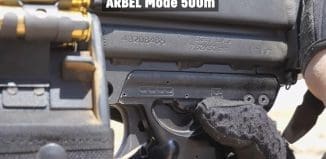Air-Air Combat – Is It Outdated?
This post is also available in:  עברית (Hebrew)
עברית (Hebrew)
By Arie Egozi
You can find that “conclusion” in many reports, written by professionals or amateurs – air-air combat has passed from the world.
The Israeli Air Force (IAF) and the Israeli industry do not share this view.
While in recent combat, the Israeli Air Force was used for very short range missions, mainly to suppress the launch of rockets into Israel, the military command does not think that this type of combat is the the only one we would see in future confrontations.
Considering that is the situation, they have decided to spend a huge sum of money on the purchase of the F-35 stealth fighter, and they also decided to invest in weapon systems that some tried to portray as obsolete.
The best example is air-air missiles. Rafael, the Israeli development house for this weapons system, has developed some very important milestones in the development program of a sixth generation air-air missile.

So far, the company has released very little information about that program, only saying that the new missile will be the most capable of its kind and will have operational ranges that will be significantly greater that those of other air-air missiles.
So although the dog fight in its classical shape is really outdated, air-air engagements will be characterized by very long ranges, and I mean very long indeed.
As said, in recent years Rafael only said that it has been developing “Building Blocks” for a sixth generation air-air missile.
One indication about the development direction – Rafael said that the “Stunner” missile, developed for the “David Sling” rocket interceptor system, is the basis for any sixth generation air-air missile that the Israeli company may be developing.
The advanced dual sensors to be used in future air-air missiles developed by Rafael will probably involve the “dolphin head” nose section that was used in the “Stunner” missile. The “dolphin head” shape allows the two sensors to function simultaneously with no interference even in “extreme conditions”.
So details are very sketchy but one thing is a solid fact – the IAF is getting ready for air-air engagements in ranges that were considered imaginary in the past.





























